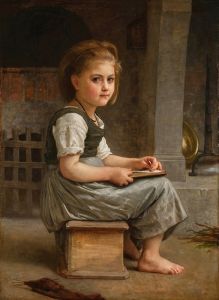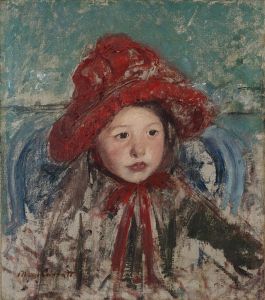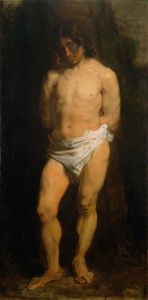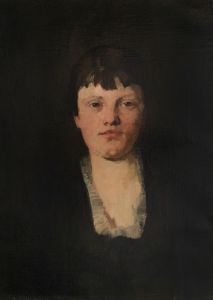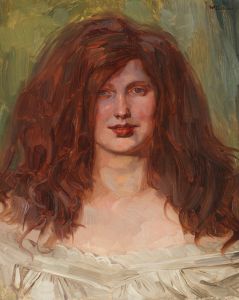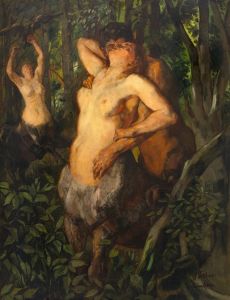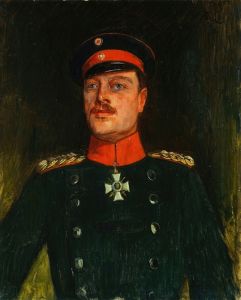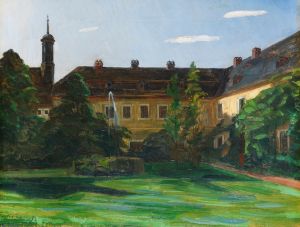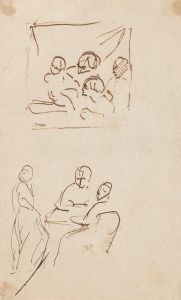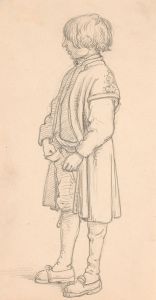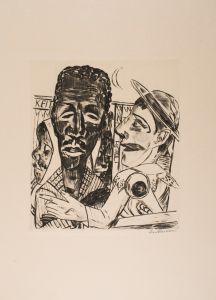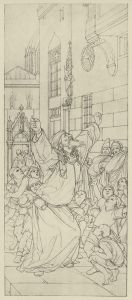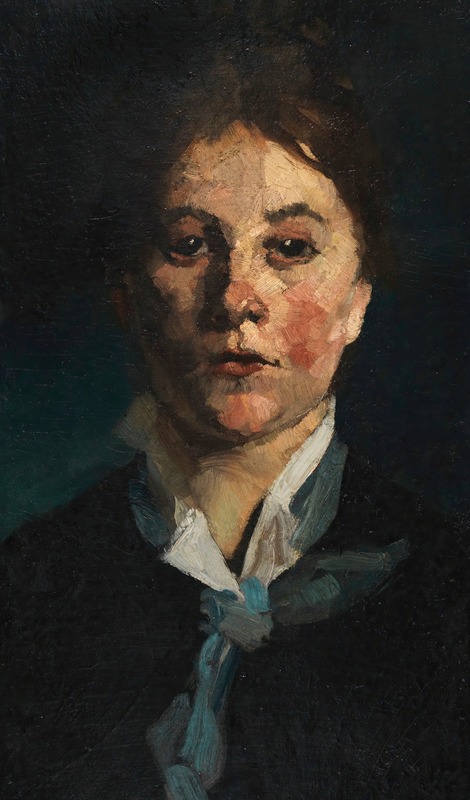
Mädchen mit weißem Kragen, en face
A hand-painted replica of Wilhelm Trübner’s masterpiece Mädchen mit weißem Kragen, en face, meticulously crafted by professional artists to capture the true essence of the original. Each piece is created with museum-quality canvas and rare mineral pigments, carefully painted by experienced artists with delicate brushstrokes and rich, layered colors to perfectly recreate the texture of the original artwork. Unlike machine-printed reproductions, this hand-painted version brings the painting to life, infused with the artist’s emotions and skill in every stroke. Whether for personal collection or home decoration, it instantly elevates the artistic atmosphere of any space.
Wilhelm Trübner was a prominent German painter associated with the Realist movement, known for his detailed and lifelike portraits and genre scenes. One of his notable works is "Mädchen mit weißem Kragen, en face," which translates to "Girl with a White Collar, Facing Forward." This painting exemplifies Trübner's skill in capturing the subtleties of human expression and the textures of clothing, which were hallmarks of his style.
Trübner was born on February 3, 1851, in Heidelberg, Germany. He initially studied under the guidance of several influential artists, including Hans Canon and Wilhelm von Diez. His education and exposure to various artistic circles significantly influenced his development as a painter. Trübner's work is often associated with the Munich School, a group of artists known for their realistic and detailed approach to painting, which was a reaction against the more romanticized styles that preceded them.
"Mädchen mit weißem Kragen, en face" is a portrait that reflects Trübner's commitment to realism and his keen eye for detail. The painting features a young girl, depicted with a serene and contemplative expression. Her white collar is a focal point of the composition, highlighting Trübner's ability to render the intricate textures and folds of fabric with precision. The use of light and shadow in the painting adds depth and dimension, bringing the subject to life and emphasizing her presence within the frame.
Trübner's portraits are often noted for their psychological depth, capturing not just the physical likeness of the subject but also a sense of their inner world. In "Mädchen mit weißem Kragen, en face," the girl's direct gaze and subtle expression invite viewers to ponder her thoughts and emotions, a testament to Trübner's skill in conveying the complexity of human character.
Throughout his career, Trübner was involved in various artistic movements and exhibitions. He was a member of the Munich Secession, an association of artists who sought to break away from traditional academic art and promote more modern approaches. His work was exhibited in numerous galleries and exhibitions, earning him recognition and acclaim in the art world.
Trübner's influence extended beyond his own paintings; he was also a respected teacher and mentor to younger artists. His dedication to realism and his innovative techniques left a lasting impact on the development of German art in the late 19th and early 20th centuries.
"Mädchen mit weißem Kragen, en face" is a fine example of Trübner's artistic philosophy and technical prowess. The painting not only showcases his ability to capture the physical attributes of his subjects but also reflects his interest in exploring the nuances of human emotion and identity. Through his meticulous attention to detail and his thoughtful compositions, Trübner has secured his place as a significant figure in the history of German art.





